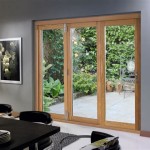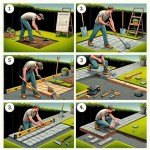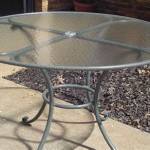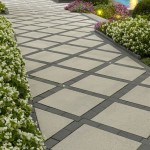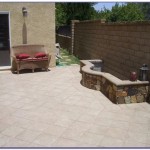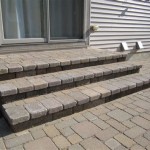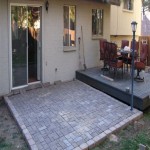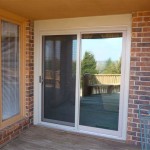A Review of Top Patio Sail Covers for 2024
Patio sail covers have become increasingly popular as a versatile and aesthetically pleasing solution for outdoor shade and protection. In 2024, advancements in materials, designs, and installation techniques have resulted in a wide array of options catering to diverse needs and preferences. This article provides a comprehensive overview of some of the top patio sail covers available this year, examining their key features, benefits, and considerations for selection.
The primary function of patio sail covers is to provide shade, reducing the impact of direct sunlight and lowering temperatures in outdoor spaces. Beyond this fundamental purpose, they also offer protection from light rain, wind, and airborne debris. Furthermore, patio sail covers can significantly enhance the aesthetic appeal of a patio, deck, or garden, adding a touch of elegance and sophistication to the outdoor environment.
Before delving into specific products, it is essential to understand the key factors influencing the performance and longevity of patio sail covers. These include the material used, the design and shape of the sail, the quality of the hardware, and the installation methods employed. Each of these aspects plays a crucial role in determining the overall effectiveness and durability of the shade solution.
Material Selection for Optimal Performance
The material of a patio sail cover is arguably the most important factor influencing its performance. The most common materials used in 2024 include high-density polyethylene (HDPE) knitted fabrics, waterproof polyester fabrics, and canvas. Each material offers distinct advantages and disadvantages in terms of UV protection, water resistance, durability, and breathability.
HDPE knitted fabrics are known for their excellent UV protection and breathability. The knitted construction allows air to circulate freely, preventing the build-up of heat and humidity beneath the sail. These fabrics are typically available in a range of colors and densities, with higher densities offering greater shade and UV protection. HDPE is also relatively affordable, making it a popular choice for many homeowners.
However, HDPE is not waterproof. While it can provide some protection from light drizzle, it is not suitable for areas where heavy rain is frequent. Additionally, HDPE fabrics may stretch over time, requiring occasional tightening or adjustment of the sail.
Waterproof polyester fabrics offer superior protection from rain and moisture. These fabrics are typically coated with a waterproof layer, such as polyurethane (PU) or polyvinyl chloride (PVC), which prevents water from penetrating the material. Waterproof polyester is also more resistant to mildew and mold growth, making it a good choice for humid climates.
However, waterproof polyester fabrics tend to be less breathable than HDPE. This can lead to the build-up of heat and humidity beneath the sail, making the area less comfortable during hot weather. Additionally, waterproof polyester may be more prone to fading or cracking under prolonged exposure to sunlight. The cost of waterproof polyester sail covers are generally higher than the HDPE counterparts.
Canvas fabrics are another option for patio sail covers, offering a classic and durable aesthetic. Canvas is typically made from cotton or a cotton-polyester blend and is often treated with a water-repellent finish. Canvas provides good UV protection and is more breathable than waterproof polyester.
However, canvas is not as waterproof as polyester and may require regular maintenance to prevent mildew and rot. It is also more susceptible to fading and staining than other materials. Canvas sail covers tend to be more expensive than HDPE but can offer a longer lifespan with proper care.
When selecting a material, it is crucial to consider the specific climate and weather conditions in the area. For hot and sunny climates, HDPE knitted fabrics are a good choice due to their breathability and UV protection. For areas with frequent rain, waterproof polyester fabrics are more suitable. Canvas fabrics offer a balance of durability, UV protection, and aesthetics but require more maintenance.
Design and Shape Considerations
The design and shape of a patio sail cover significantly impact its structural integrity, wind resistance, and aesthetic appeal. The most common shapes include triangles, squares, rectangles, and custom configurations. The choice of shape depends on the size and layout of the patio, the desired amount of shade, and the overall aesthetic vision.
Triangular sail covers are a popular choice for smaller patios and decks. Their simple design and ease of installation make them a cost-effective solution for providing shade in specific areas. Triangular sails can be arranged in various configurations to create overlapping shade patterns or to complement the architectural features of the outdoor space.
Square and rectangular sail covers are better suited for larger patios and decks. They offer more comprehensive shade coverage and can be used to create a more enclosed and protected outdoor area. Square and rectangular sails are often used in conjunction with support posts or existing structures to create a stable and secure shade structure.
Custom configurations allow for greater flexibility in design and can be tailored to the specific needs and aesthetic preferences of the homeowner. Custom sail covers can be designed to fit irregular-shaped patios, to provide shade over specific features such as pools or hot tubs, or to create unique and visually striking outdoor spaces.
In addition to the shape, the design of a patio sail cover should also consider the tensioning system. Proper tensioning is essential for maintaining the structural integrity of the sail and preventing sagging or flapping in the wind. Common tensioning systems include turnbuckles, shackles, and adjustable straps. These systems allow for precise adjustment of the tension, ensuring that the sail remains taut and secure.
Furthermore, the design should incorporate reinforced edges and corners to prevent tearing or fraying. Reinforced stitching and durable webbing are essential for withstanding the stress and strain of wind and weather. High-quality hardware, such as stainless steel D-rings and corner rings, is also crucial for ensuring the longevity and performance of the sail.
The slope of the sail is another important design consideration. A slight slope is recommended to allow rainwater to run off easily, preventing water from pooling on the surface of the sail. This is particularly important for waterproof sail covers, as standing water can place excessive weight on the structure and potentially cause damage.
Hardware and Installation Best Practices
The quality of the hardware and the installation methods employed are critical for ensuring the long-term performance and stability of a patio sail cover. The hardware should be made from durable, weather-resistant materials, such as stainless steel, to prevent rust and corrosion. The installation should be performed by qualified professionals or by homeowners with experience in structural installations.
Support posts are often required to provide secure anchor points for the sail cover. These posts should be made from sturdy materials, such as treated wood, steel, or concrete, and should be properly anchored in the ground. The depth and diameter of the posts should be determined based on the size and weight of the sail, as well as the wind load in the area.
Anchor points can also be existing structures, such as buildings, fences, or trees. However, it is essential to ensure that these structures are strong enough to withstand the tension and strain of the sail. If using existing structures, it is recommended to consult with a structural engineer to assess their load-bearing capacity.
Installation techniques vary depending on the type of anchor points used. When installing sails to support posts, concrete footings are typically required to provide a stable foundation. The posts should be set in concrete and allowed to cure before attaching the sail. When installing sails to existing structures, appropriate mounting hardware, such as eye bolts or brackets, should be used to distribute the load evenly.
Tensioning the sail properly is crucial for preventing sagging and flapping. Turnbuckles are commonly used to adjust the tension of the sail, allowing for precise control over the tightness of the fabric. The tension should be adjusted evenly across all anchor points to ensure that the load is distributed equally.
Safety precautions should always be taken during installation. Wearing safety glasses, gloves, and appropriate footwear is essential for protecting against injury. If working at heights, a ladder or scaffolding should be used, and proper fall protection equipment should be worn. It is also important to be aware of underground utilities, such as gas lines and electrical cables, before digging or driving posts into the ground.
The longevity and performance of a patio sail cover are directly related to the quality of the materials, the design considerations, and the installation methods employed. By carefully considering these factors, homeowners can select a patio sail cover that provides years of reliable shade and protection, enhancing the beauty and enjoyment of their outdoor spaces.
Regular maintenance is also important for extending the lifespan of a patio sail cover. This includes cleaning the sail regularly to remove dirt and debris, inspecting the hardware for signs of wear or corrosion, and tightening the tension as needed. By taking these simple steps, homeowners can ensure that their patio sail cover remains in good condition for years to come.
The market for patio sail covers is continuously evolving, with new materials, designs, and technologies emerging regularly. Staying informed about the latest advancements can help homeowners make informed decisions and select the best possible shade solution for their needs. Researching different brands, reading reviews, and consulting with professionals can all contribute to a successful outcome.

8 Best Sun Shade Sails Of 2024

Shade Sails Coolaroo

11 Types Of Outdoor Shade Sails Which One Is Right For You Shadeform Blog

8 Best Sun Shade Sails Of 2024

Backyard Shade Sails Landscaping Network

Sun Shade Sails For Patios Outdoor Areas Van Nuys Awning

Best Shade Sails And Canopies To Upstage Any Garden Brolly In 2024 The Independent

Shade Sails Coolaroo

Shade Sails An Easy Diy Guide To Installing Your Own Reviewed

8 Best Sun Shade Sails Of 2024
Related Posts

